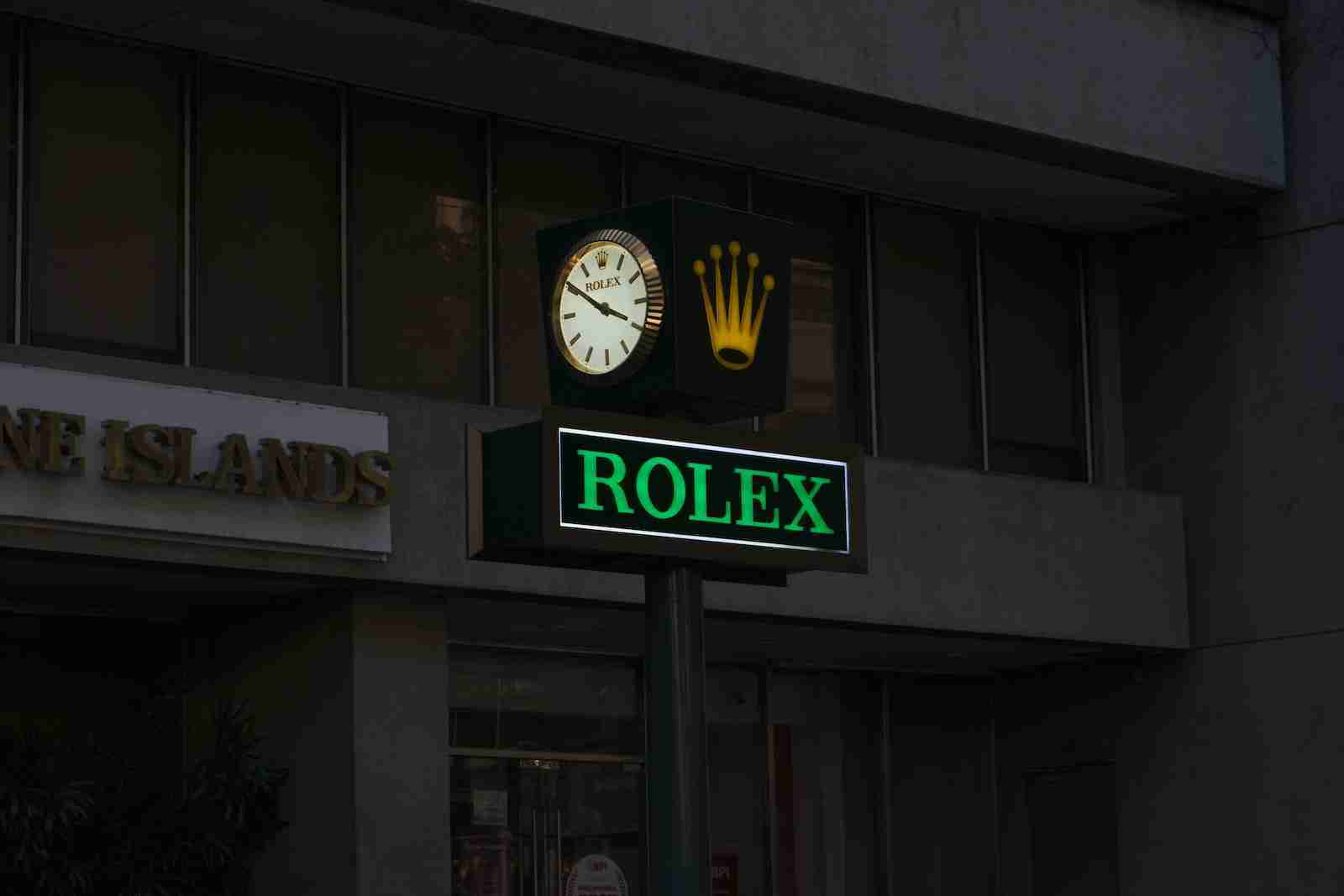25 Facts About Rolex You Need to Know
1. Rolex was the first manufacturer to create a waterproof watch, also known as Oyster.
Rolex was generations ahead of other watch manufacturers when it released the first-ever waterproof model. Introduced in 1926, the revolutionary style has come to be known today as the oyster.
The highly anticipated design was a state-of-the-art invention designed to give owners an unprecedented level of protection against water and accidental damage. It’s no surprise that its launch sent shockwaves throughout the industry, rocketing Rolex designs into cult status.
2. The name Rolex was chosen because it sounded classy and extravagant.
Rolex wasn’t named after any famous person like Louis Vuitton, Prada, or Gucci. Rolex was chosen for its elegance, easy pronunciation, luxury, and prestige, despite having no meaning.
Hans Wilsdorf, the company’s founder, aimed for a name that was short enough to fit on the face of a watch yet memorable and distinctive. He believed that the name Rolex was onomatopoeic, echoing the sound of a watch being wound.
3. The most expensive Rolex ever sold was an 18k gold Daytona Cosmograph.
It was the 2017 auction that made headlines all around the world. Known as one of the most sought-after timepieces, a rare Rolex Paul Newman’s Cosmograph Daytona sold for an incredible $17.8 million.
What made this piece special and so valuable despite its hefty cost? This watch had been crafted from 18-karat gold and contained more than 10,000 diamonds. Reports suggest experienced and successful buyers from different parts of the world, including the U.S. and Europe, were bidding for this masterpiece.
4. The Rolex Milgauss watch was designed specifically for nuclear scientists.
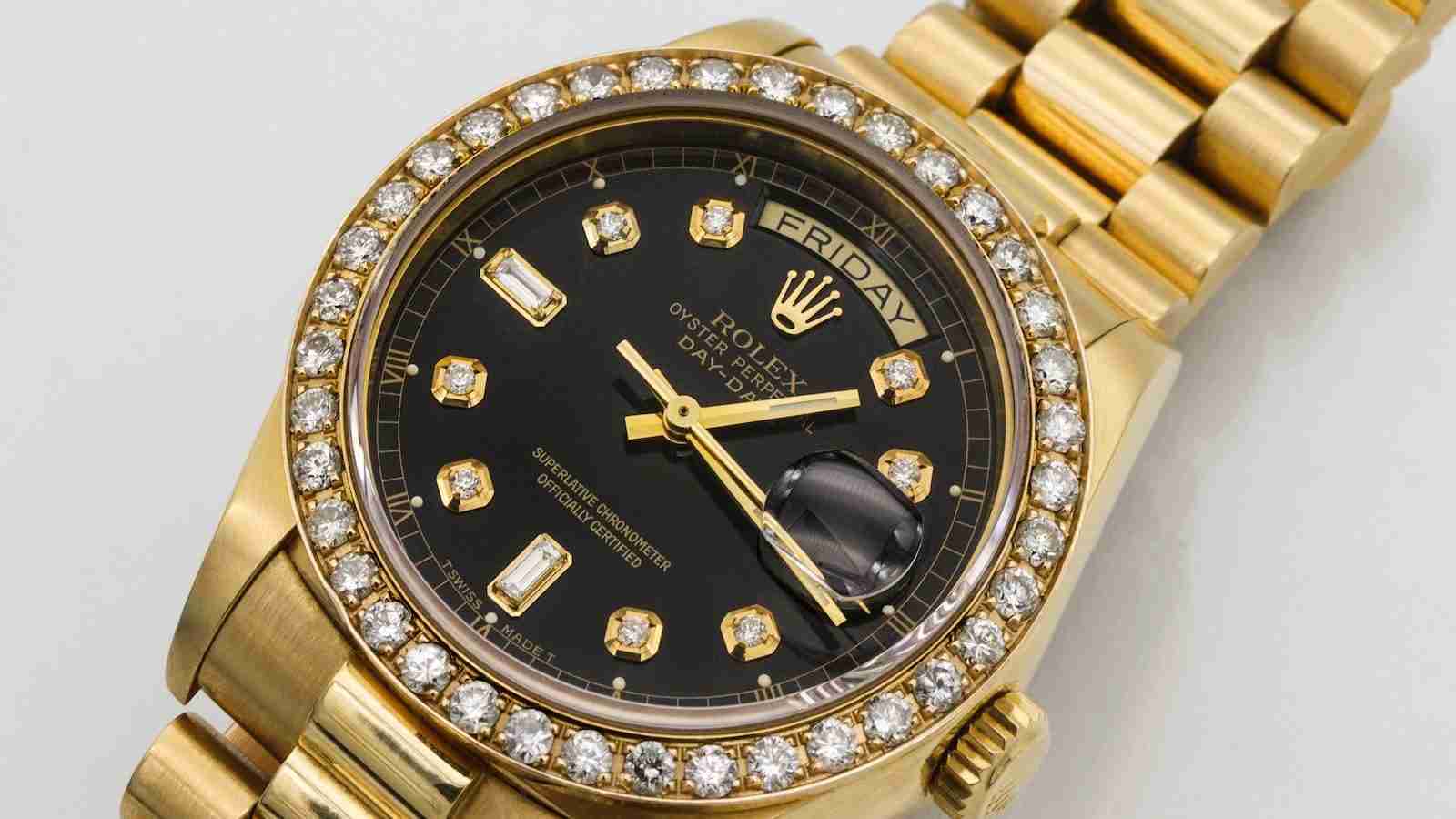
The Rolex Milgauss stands out for its exceptional resistance to magnetic interference, a critical feature in environments dominated by strong magnetic fields. After rigorous evaluation in the 1950s by CERN, it was confirmed to withstand magnetic forces up to 1,000 gauss, a testament to Rolex’s pioneering spirit and technological prowess.
This resilience not only underscored Rolex’s commitment to innovation but also provided the scientific community with a reliable instrument capable of maintaining accuracy in highly magnetic settings.
5. Rolex has operated as a charity under the Hans Wilsdorf Foundation since 1944.
The Hans Wilsdorf Foundation runs Rolex. It was set up in 1944 as a memorial to Hans Wilsdorf’s late wife. This non-profit trust owns all Rolex shares and gives the company’s profits to different good causes.
The Foundation works on scientific, artistic, and environmental projects and is run by directors instead of owners. As a for-profit company owned by a non-profit foundation, Rolex is able to make a big difference in the world’s charities while still keeping its status as a luxury brand.
6. Rolex uses the Roman numeral IIII instead of IV on their dials for aesthetic reasons.
Rolex has made a design choice to use the Roman numeral IIII instead of the traditional IV on their watch dials. This decision is driven by visual balance and aesthetic appeal. It enhances symmetry on the dial, creating a more harmonious and pleasing visual experience for the wearer.
This subtle yet deliberate choice reflects Rolex’s attention to detail and commitment to combining functionality with elegance.
7. Rolex conquered Everest and the Mariana Trench without stopping.
Rolex conquered Mount Everest and the Mariana Trench, showcasing their durability and precision. The Rolex Explorer was worn by Sir Edmund Hillary and Tenzing Norgay during the first ascent of Mount Everest in 1953.
Similarly, the Rolex Deepsea Special was attached to the Trieste submersible during its dive to the deepest point of the Mariana Trench in 1960. It emerged unscathed, even at a depth of around 10,916 meters (35,814 feet).
8. Rolex is the official timekeeper of Wimbledon since 1978.

Since 1978, renowned Swiss watchmaker Rolex has had an inseparable relationship with tennis’s oldest and most prestigious major, Wimbledon, appointed its official timekeeper.
Through its partnership with one of the sport’s foremost stages, Rolex has been able to connect with its audience in a unique way.
9. Rolex’s most expensive watch strap is called the President and is made with 18k gold.
The very pinnacle in terms of Rolex watch straps is the elusive and alluring President. Its captivating, luxurious allure is largely attributed to its use of solid 18k yellow gold.
The purchase of a flagship Rolex model like this swanky item strongly aligns with the status and prestige afforded to the brand. The watch exudes confidence, antiquity, and authority, instantly catapulting the wearer into the ranks of the upper echelon.
10. Rolex does not make watches with see-through case backs, with two rare exceptions from the 1930s.
Rolex is renowned for its commitment to durability and precision, traditionally favoring solid case backs to enhance the robustness and water resistance of its watches. However, in the 1930s, Rolex produced a very limited number of watches with see-through case backs, a rare deviation that allowed the intricate craftsmanship of the movement to be visible.
These exceptional pieces are highly prized by collectors for their uniqueness and provide a rare window into the mechanical ingenuity of Rolex’s early years, making them extraordinary exceptions in Rolex’s history of watch design.
11. The classic Rolex crown logo debuted in 1925.
The Rolex logo, registered in 1925, symbolizes luxury and precision with its iconic five-pointed crown. Hans Wilsdorf, the brand’s founder, aimed for the crown to reflect Rolex’s status as the pinnacle of watchmaking.
The logo’s gold and green colors represent excellence and prosperity, making it a globally recognized emblem of status and achievement in the luxury watch industry.
12. Rolex was established in England by Hans Wilsdorf and Alfred Davis.
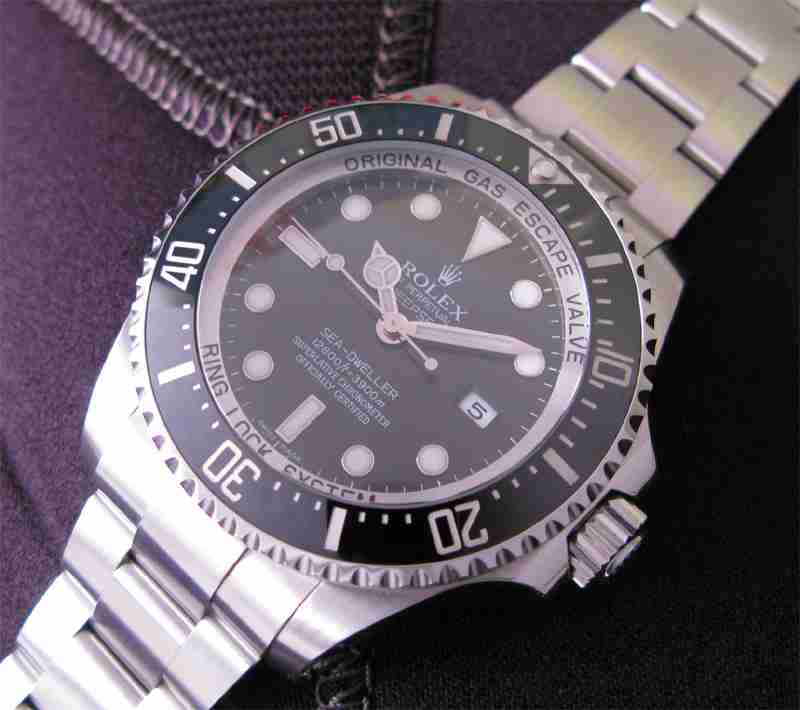
Rolex, a luxury watch brand, was founded in London in 1905 by Hans Wilsdorf and Alfred Davis. To take advantage of lower taxes, they relocated the company to Geneva, Switzerland, in 1919.
This strategic move allowed Rolex to thrive in a country renowned for its watchmaking expertise. Settling in Switzerland helped Rolex to establish itself as a symbol of precision and elegance in the watch industry.
13. Rolex watches are made from 904L-grade stainless steel, which is more resistant to scratches and corrosion.
Rolex watches are crafted with nothing less than the highest precision and quality. To ensure that you’ll have a watch that looks fantastic every single day, they use 904L stainless steel in all of their pieces.
The metal is renownedly more resistant to scratches and corrosion than other stainless steel types. This material is even used in the aerospace and chemical industries.
14. Rolex has its own in-house foundry, where it creates its own gold and other metals for use in its watches.
Some watch enthusiasts may not know this, but Rolex has expertise that goes beyond watchmaking. The brand has its own in-house foundry, which is an industrial facility dedicated to producing gold and other precious metals that are used exclusively in Rolex watches.
Here, specialized material scientists formulate various types of alloys to realize dream watches as imagined by their talented watchmakers and designers.
15. The cheapest Rolex is called the Air King, and it costs $2,200.
The Air King stands as Rolex’s most accessible model, priced at $2,200, offering an entry point into the brand’s prestigious lineup.
This model embodies Rolex’s commitment to quality and heritage, providing a more affordable option for enthusiasts to own a piece of the esteemed brand’s legacy.
16. A Rolex watch takes about a year to manufacture but only 4 hours to assemble.
Rolex watches, known for their exquisite craftsmanship, require an incredible amount of effort to make. From the initial designing process to the final assembly and manufacturing, it takes roughly a year before one of these timepieces can grace hearing wrists.
A variety of specialized tools are utilized throughout production at distinct stages to create some of the most desirable watches in the world with precision and attention to detail.
17. During World War II, Rolex became popular by offering replacements to British soldiers.
During World War II, Rolex gained popularity through a unique offer by its founder, Hans Wilsdorf, to replace watches confiscated from British soldiers by enemy forces.
Understanding the importance of a reliable timepiece for military personnel, Wilsdorf extended credit to POWs, allowing them to order a Rolex watch without payment until after the war.
18. Rolex watches are powered by a Perpetual rotor, which self-winds the watch when worn.
Rolex watches offer unprecedented accuracy and date to any active or stylish individual. Their charismatic appeal is due in part to the Perpetual rotor, a revolutionary self-winding technology on which Rolex built its name.
By turning with even the slightest movements of the wrist during active wear, the Perpetual rotor captures energy from motion and winds itself throughout the day, so you never need to worry whether your watch is powered on or not.
19. Rolex became the first watchmaker to obtain the COSC certification in 1910.
Rolex’s COSC certification marked a significant milestone; it was the first time a watchmaker had achieved this. The certification is awarded only to timepieces that meet the highest standards of accuracy.
This achievement reinforced Rolex’s reputation as a leader in watchmaking excellence.
20. Rolex manufactures approximately 1.05 million watches every year.
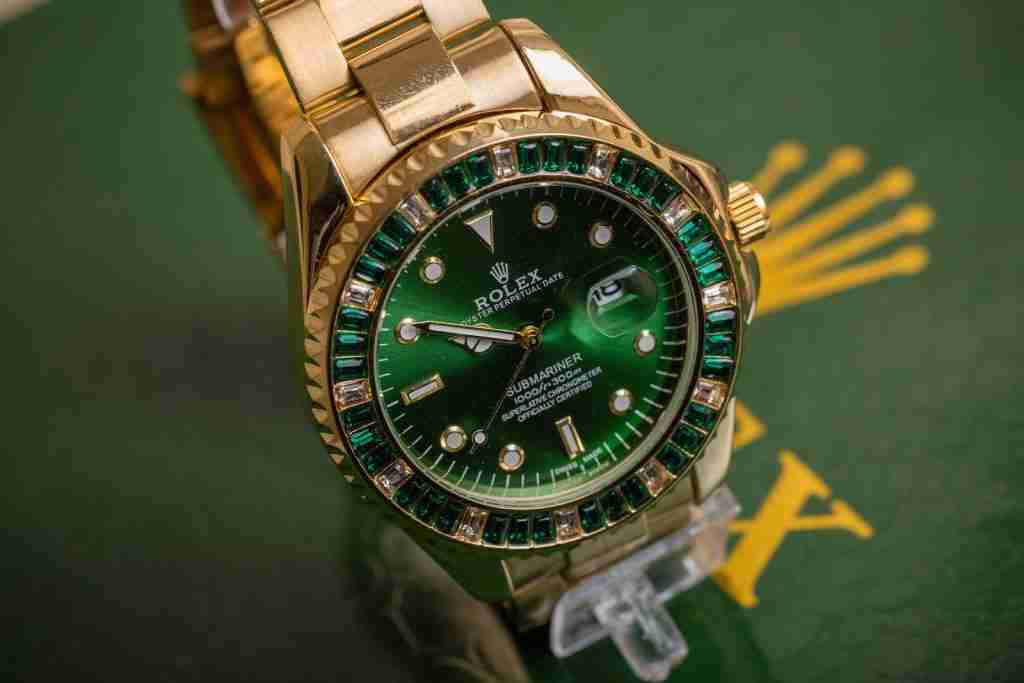
Rolex produces approximately 1.05 million watches annually, showcasing its capability to maintain high-quality craftsmanship at scale. This production volume underscores Rolex’s position as a leading luxury watchmaker, balancing exclusivity with accessibility.
In 2021, Rolex reported a revenue of $13 billion, reflecting the brand’s significant impact on the luxury market and its ability to generate substantial income from its high production output.
21. All Rolex watches undergo pressure testing at the factory.
Every Rolex watch undergoes rigorous pressure testing at its factory to ensure its water resistance and structural integrity.
This critical quality control measure involves placing watches in air-pressure chambers to simulate deep-water conditions, guaranteeing that each timepiece meets Rolex’s strict standards for waterproofness.
22. Rolex Headquarters has high-level security features comparable to a high-security prison.
Rolex Headquarters prioritizes robust security measures to safeguard its invaluable assets. Comparable to highly secure facilities, Rolex employs multi-layered security protocols, including advanced access control systems, vigilant security personnel, and state-of-the-art surveillance technology.
23. The Deepsea is the deepest diving watch in the Rolex lineup, with a depth rating of 3900ft.
The Deepsea from Rolex truly lives up to its namesake, with a scope that keeps expanses of glimmering ocean depths in its reach. With a rating of 3900 ft, there is no dive too deep for this spectacular wristwear.
Now divers everywhere can traverse places both wide and far, embracing a sight that others only ever dream of going near. Far outlasting any wave or trek, this watch paves the way for a plunge, unlike any other expedition.
24. The largest Rolex face at 44mm is found on the Yacht-Master II and Deepsea models, designed for sailors and divers.
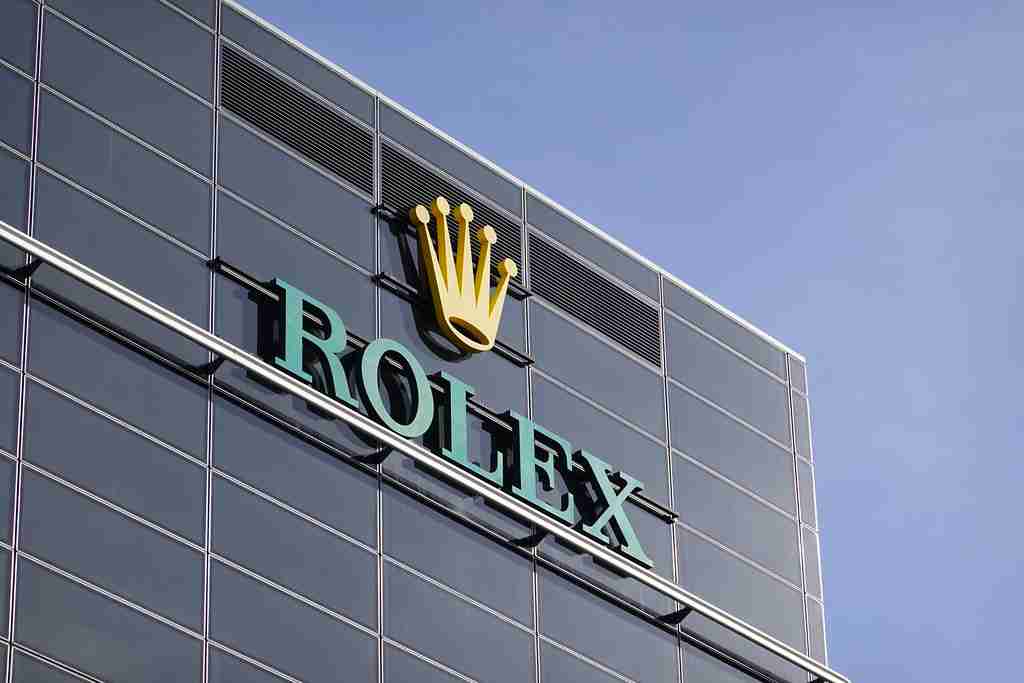
At 44mm, the Yacht-Master II and Deepsea models feature the largest Rolex face, specifically engineered for the demanding environments of sailing and deep-sea diving.
Introduced in 2007, the Yacht-Master II is celebrated for its pioneering Regatta Timer, enhancing the competitive edge of sailors with precise countdown functionality.
Meanwhile, the Deepsea model stands as a testament to Rolex’s deep commitment to underwater exploration, offering exceptional durability and water resistance for divers.
25. A Rolex watch helped solve the 1996 murder of Ronald Joseph Platt.
In 1996, the murder of Ronald Joseph Platt was solved with the help of a Rolex watch he wore. After Platt’s body was discovered by a fisherman, the identity of the deceased remained a mystery until the police noticed his Rolex Oyster Perpetual.
Rolex’s meticulous records, which include purchases and service dates, identified Platt as the owner. This clue led investigators to Albert Johnson Walker, who had assumed Platt’s identity.
The watch also played a crucial role in determining the time of death, as it continued running until its power reserve depleted, pinpointing Platt’s murder to around July 20, 1996. Walker was eventually arrested and convicted of the murder.
FAQS
The price of a Rolex watch can vary greatly depending on the model, materials, and other factors. On average, the price of a new Rolex watch starts at around $5,000, with some models, such as the Oyster Perpetual, starting at a lower price point of around $3,000. However, the cheapest Rolex watch currently available is the Oyster Perpetual 31, which has a starting price of around $4,000.
There are several reasons why Rolex watches are considered expensive. One of the main reasons is the high-quality materials and craftsmanship that go into making each watch. Rolex uses only the finest materials, such as stainless steel, gold, and platinum, and each watch is made with precision and attention to detail. Additionally, Rolex is known for its innovative technology and features, such as its self-winding mechanisms and waterproof designs, which add to the cost of the watches.
Whether or not buying a Rolex is worth it is a personal decision that ultimately depends on an individual’s needs, preferences, and financial situation. For some people, the quality, craftsmanship, and prestige of a Rolex watch may make it a worthwhile investment. Rolex watches are known for their durability, precision, and reliability and can often be passed down through generations. Additionally, Rolex is a prestigious brand with a long history of innovation and excellence, which may add to the value and appeal of the watch.
Most modern Rolex watches are powered by a self-winding mechanism, which uses the movement of the wearer’s wrist to wind the watch and keep it running. This means that the watch does not require a battery and can run indefinitely as long as it is worn regularly. However, some older models of Rolex watches may use a battery, and some newer models may be equipped with additional features, such as a quartz movement or a chronograph, that require a battery to operate. It is always best to refer to the specific model and reference number of the Rolex watch in question to determine its power source.
Many Rolex watches are made of gold or gold-plated stainless steel. Rolex uses 18-karat yellow, white, and Everose gold, which is a proprietary blend of gold, copper, and platinum, for its gold watches. The gold used in Rolex watches is of high quality and is carefully crafted and polished to create a luxurious finish.
Rolex was founded in London, England in 1905.
Rolex watches are powered by either manual winding or automatic winding movements. The automatic winding movements are powered by the movement of the wearer’s wrist, which rotates a rotor that, in turn, winds the watch’s mainspring.
Rolex has been around for over a century, since its founding in 1905.

